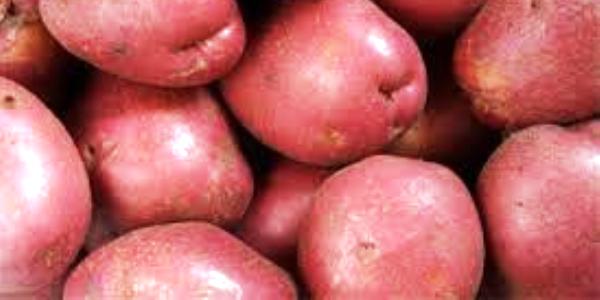 All potatoes belong to the Solanaceae or nightshade family. Others include tomatoes, eggplants, peppers, and tomatillos. Potatoes are the swollen portion of the underground stem which is called a tuber and is made to provide food for the green leafy portion of the plant. Potato plant should not be allowed to flower and fruit, otherwise it will bear an inedible fruit resembling a tomato.
All potatoes belong to the Solanaceae or nightshade family. Others include tomatoes, eggplants, peppers, and tomatillos. Potatoes are the swollen portion of the underground stem which is called a tuber and is made to provide food for the green leafy portion of the plant. Potato plant should not be allowed to flower and fruit, otherwise it will bear an inedible fruit resembling a tomato.
1) Vitamins and Minerals
Red potatoes are abundant in nutrients such as potassium, iron and vitamin C. Potassium is useful for improving the functions of cells, tissues and organs. Red potatoes on average contain 969mg of potassium. Vitamin C is useful in fighting free radicals in the body. Red potatoes have 18mg of vitamin C per serving. Iron on the other hand supplies the body with energy and oxygen at 1.6 mg per serving.
2. Glycemic Index
Red Potatoes score differently on the Glycemic Index (GI) depending on how you prepare them. For instance, if you boil a red potato and eat it warm, Glycemic Index will be 89 while the same potato will have a score of 56 if boiled and eaten cold. This has a major impact on the level of glucose in the body. This scale goes up to 100 which are the score of pure glucose. GI is used to measure the impact of various foods on the blood sugar. Based on the above findings, it is telling that eating a boiled potato while cold is better than warm one because of the low score in the Glycemic Index.
3. Antioxidant Content
Red potatoes are rich in an anti-oxidant known as anthocyanins, which is five times what you will get in a russet potato. This amount of anthocyanins halves when you the red potatoes are fried in order to make French fries, commonly known as chips. Baking them on the other hand lowers the level of the anti-oxidant by roughly 65 percent. Anti-oxidants are useful in the body for destroying free radicals which damage the cell wall of healthy cells, leading to a myriad of conditions such as heart diseases and certain types of cancers.
4. Nutritional Content
Red potatoes are abundant in proteins. For instance, one average sized red potato has 4.03gms of protein. This kind of protein in the sense that, just like other protein obtained from vegetables, it displaces higher fat sources that are responsible for cardiovascular diseases such as stroke and cardiac arrest. Red potatoes are also rich in fiber, supplying 3, 6 g which is 15 percent of the Recommended Daily Allowance (RDA). Fiber plays a crucial role in maintenance of favorable weight as you will feel satiated for long hence eat less.

